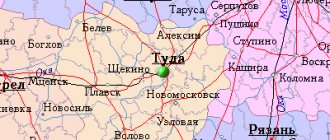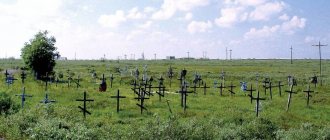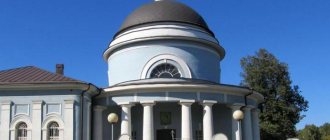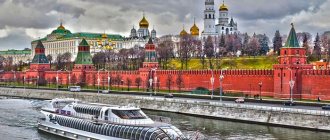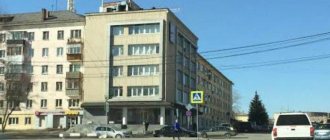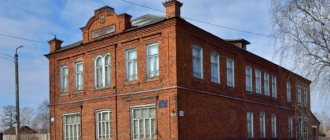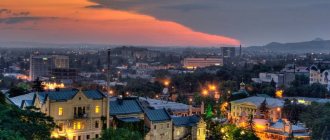Year founded: 1146
The date of the city day is unique for each year.
In 2021,
this date is
September 11
.
In 2021, due to the pandemic, mass events in honor of the city day are canceled or may be postponed
Tula Kremlin
Tula
- a Russian city, the capital of the Tula region, located at the confluence of the Tulitsa River with the Upa River.
For the first time about Tula
the city has been mentioned since the 14th century, although settlements existed in its place earlier. In the 15th century, Tula finally became part of the Russian state. In the 20s of the 16th century, the Tula stone Kremlin was built, which has survived to this day.
The border position of the city leads to the predominance of the military; the number of merchants and artisans among the townspeople is small. In 1595, according to the royal decree, 30 blacksmiths were moved to the city to develop the weapons business. This determines the future fate of the city as the main weapons workshop in Russia.
Kazan embankment (Photo: wikipedia.org) In the 17th century, the city ceased to be a border city, which served as an impetus for the development of industry. The first samovars in Tula began to be made at the beginning of the 19th century. In the War of 1812, the city's residents made a great contribution not only with weapons, but also with well-equipped militia. The Tula Kremlin and the city were never taken during any war.
Currently, Tula is the largest industrial and cultural center.
When in Tula you should definitely visit
Kremlin, Epiphany and Assumption Cathedrals. It is interesting to visit the weapons museum. It’s delicious to visit the gingerbread museum and complement your culinary tour with the samovar museum. Tula is famous for the house-museum of L.N. Tolstoy Yasnaya Polyana.
Museum of Weapons (Photo: wikipedia.org)
Interesting facts
It is interesting that Tula is not only the birthplace of the Russian samovar and the capital of gingerbread. Tula is also the birthplace of the Russian accordion; Tula accordions are famous throughout the world.
The origin of the name Tula has several versions. According to one of them, this is a “hidden, inaccessible place”; according to the second, it is translated from Old Turkic as “to take by force, to take away”.
The city is home to more than 475 thousand people (2020).
Hero City Day
Tula is celebrated in September.
General information and history of Tula
185 kilometers from Moscow, on the Central Russian Upland, is the birthplace of gingerbread, samovars and good weapons - the city of Tula. Tula is a year older than the capital of Russia - the first mention of this city dates back to 1146. After the Tatar-Mongol invasion, Tula became a center of trade and crafts; it belonged to the Ryazan princes. And after the famous Battle of Kulikovo, in the second half of the 15th century, Tula became part of the unified Russian state.
This is a city with a very interesting history, rich traditions and mysterious legends. This is the birthplace of many famous figures of art, science and history. Lev Nikolaevich Tolstoy and Sergei Yesenin, Mikhail Saltykov-Shchedrin, the famous Russian artist Vasily Dmitrievich Polenov, the illegitimate son of the Great Empress Catherine II, Count Bobrinsky, the famous Lefty and the founders of the famous Russian Demidov family lived here.
After World War II, Tula received the title of hero city. There were fierce battles on its territory, but the residents steadfastly withstood the defense, not allowing the Nazis to approach the capital. Throughout the world, Tula is famous for its delicious gingerbreads, samovars and weapons.
Climate and ecology of Tula
Tula is located in an area of temperate continental climate, summers here are quite warm (the average temperature in July is +20 degrees Celsius), winters are cool (the average temperature in January is -7 degrees Celsius). In recent years, there has been a significant increase in air temperature in summer - in June, July and August the air warms up to +30 - +35 degrees.
Near Tula there are quite a few large ones (the largest exporter of commercial cast iron in Russia), OJSC Kosogorsk Metallurgical Plant (quite a large producer of blast iron, artistic and industrial castings), OJSC Polema (one of the largest enterprises in the Russian Federation specializing in powder metallurgy), as well as OJSC Vanadium-Tula. The operation of these large factories, of course, negatively affects the ecology of the city, having a direct impact on the cleanliness of the air.
OJSC Tulachermet - cloud production factory
Some factories dump waste into rivers (in Upa, for example), causing serious pollution.
Migration
Tula is one of the economically developed cities of Russia, a large industrial and scientific center. People come to live from the former republics of the USSR and from some neighboring regions with lower incomes: Yaroslavl, Oryol, Kaluga regions.
The figures for migration between the constituent entities of the Russian Federation are as follows:
- 3226 arrived, 3440 Tula residents left for another area.
- In the first 3 months of 2021, 10,294 people arrived, 9,731 left, the increase was 563.
- Migration external to the region: 6391 arrivals and 5828 departures.
- Population growth due to migration with the CIS countries in 2020 amounted to 700 people, 77 people from other foreign countries.
- There were fewer relocations within the region by 799 people (17.0%).
- 88% of Tula residents leaving remain in the Central Federal District, mainly in Moscow and the Moscow region, 3.4% move to the Northwestern Federal District, 3.2% to the Southern Federal District, 2.3% to the Volga Federal District and 0.9% to the Ural Federal District.
Current data on population migration is posted on the Tulstat website.
Population of Tula
According to statistics at the beginning of 2014, 490,508 people now live in Tula, 56% of whom are women and 44% are men.
In recent years, the city's population has shown a very unfavorable trend: gradually the number of city residents is greatly declining. Thus, over the past 6 years, the number of city residents has decreased by 15,000 people. This may be due to the fact that many people decide to change their place of residence - applicants enter Moscow universities, older people try to move closer to nature, moving to regional towns and villages. However, one cannot ignore the increasing mortality rates and declining birth rates over the years.
Strength extreme competitions in Tula
Many families now try not to have more than one child. And this situation arises: people die, and fewer and fewer children begin to replace them. The reluctance of parents to increase the number of children in the family is often associated with an unfavorable situation in society and the inability to financially support the upbringing of children. Therefore, now the mortality rate is rising, and the birth rate is invariably declining.
Exhibition-fair Tula gingerbread
One of the main problems of the region is low life expectancy. So, on average, according to demographic studies, Tula residents live relatively short lives - most of them die at the age of 63. This is one of the lowest rates in all of Russia.
Most of the population of Tula today is of working age, their level of income is average.
There are a lot of schools, universities and vocational colleges in the city. Most of the population is educated. The difficulties are connected only with the acute shortage of places in kindergartens in the city - many parents are forced to wait in line for a kindergarten for their child immediately after his birth. Nowadays, many private kindergartens are appearing, however, not all families can afford to pay for the relatively expensive education of their child in kindergarten.
Age and sex composition
In the Tula region, according to Rosstat, there are 669,703 men and 809,115 women. In the table you can see the change in the size of the male and female population depending on age. A turning point in the quantitative ratio of men and women occurs after 40 years.
As age increases, the male population decreases. At age 70 and over, the difference is 84,100. By 2024, rising life expectancy for men is expected to narrow the gender gap.
Of the total working age population, there are 425,087 men and 374,235 women. By 2024, the number of workers will increase by 2.5% due to an increase in the retirement age.
Districts and real estate of Tula
Tula Map
Historically, there used to be many villages around Tula. Over time, 14 of them gradually became part of the city. Today they are microdistricts of Tula (Krasny Perekop, Kosaya Gora, Plekhanovo, Glushanki, Krivoluchye, etc.).
Today the city is administratively divided into 5 districts: Central, Proletarsky, Zarechensky, Privokzalny and Sovetsky district. It is especially worth noting that the Sovetsky and Privokzalny districts of Tula have a common territorial administration (administration). Each district has its own characteristics, advantages and disadvantages, and a unique history.
The central district is the heart of the city. This is where most of the shops, large industrial enterprises, architectural and historical monuments of Tula, and sports grounds are concentrated. It seems that life here does not subside for a minute, even at night.
Night center of Tula
This is the oldest district of Tula, therefore, in addition to high-rise modern high-rise buildings, there is also a fairly large sector of private households. Almost all the houses in this sector, unfortunately, are in rather disrepair. If you walk a little deeper into the streets near the Kremlin, you can see dugouts of an ancient building almost level with the asphalt, in which people still live.
Walking along the streets of the Central District, you can come across many buildings dating back to the 19th and 20th centuries and representing examples of wooden architecture of those times.
The cost of real estate in the Central District is one of the highest in the city. Thus, the cost of one square meter of real estate in new high-rise buildings is from 60,000 rubles, in the secondary sector - from 70,000 rubles.
The Central District of Tula also includes 26 villages that were previously located outside the city, but over time became part of Tula. Such villages, for example, include the village of Kosaya Gora or the village of Skuratovo. Housing in them is relatively inexpensive, however, these villages are located at a considerable distance from the center and are not distinguished by enviable tranquility.
The Proletarsky district is located in the northeast of the city, it is the largest district of Tula. Previously it was called Chulkovsky. The vast majority of residents of this area were previously employed in the arms and metallurgical industries, which today is reflected in the names of the streets: there are streets such as Garmonnaya and Lozhevaya, Patronnaya, Zamochnaya.
Most of the buildings in the Proletarsky district are residential multi-storey buildings. This is one of the most populated areas of the city. It is distinguished by its transport accessibility: to get to the city center, its residents only need to cross the Chulkovsky Bridge or the Eastern Bypass.
Tula. Proletarsky district
Among the residential buildings in the Proletarsky district, unfortunately, there are practically no areas for recreation and walking.
On the territory of the Proletarsky district, at a considerable distance from the center of Tula, there are also two more microdistricts - Krivoluchye and Glushanki. They are also residential areas with houses and shops. The cost of housing in the Proletarsky district ranges from 40,000 rubles per square meter.
The Sovetsky district of Tula today is administratively united with the Station district. Despite the fact that it is the youngest district of the city, about 90 thousand city residents live on its territory today. Its high popularity is due to its proximity to the city center and all important buildings. On its territory there is a central park of culture and recreation named after. Belousov, the station district belongs to Platonovsky Park.
Tula. Belousov Park
In the area there are not only many old and new buildings, but also a significant number of places for walking with children and relaxing. There are relatively many playgrounds and green spaces here. Therefore, most Tula residents strive to acquire housing in the Sovetsky or Privokzalny districts of the city. On the territory of the Sovetsky district there are also the central transport arteries of the city - Moskovsky Station and Bus Station. The cost of housing here ranges from 50 – 60 thousand rubles per square meter.
Tula. Railway station
Zarechensky district is often called simply “Zarechye”. This area is located in the northwestern part of the city. This is one of the oldest parts of Tula, it was built in 1595.
Tula. Zarechye
Initially, by royal decree, this area was organized in order to place blacksmiths on its territory, who were supposed to produce weapons. This interesting fact of history is reflected in the names of the streets: Stvolnaya, Dulnaya, Arsenalnaya, Porokhovaya, Kurkovaya and others.
Zarechye is a region of contrasts. Today, on its territory there are both modern buildings (for example, the new Museum of Weapons) and very old houses in which people still live. The remote corners of Zarechye are quite dangerous; you should be careful when entering them at night.
It is especially difficult to get from Zarechye to the city center in the morning - people have to endure kilometer-long traffic jams and waste time. The same situation applies to traffic in the evening from the center back to Zarechye. However, housing here is relatively affordable - its cost is from 40,000 rubles per square meter.
Tula Serif Line
Scheme of the Tula zasek line
Simultaneously with the construction of the Tula Kremlin and Ostrog, the construction of grand lines of fortifications began - zasek . They consisted of a number of fortified cities, interconnected by a continuous series of ramparts and ditches, and in areas of dense forest - abatis. In forest areas from 50 to 100 meters wide, trees were cut down and thrown towards the enemy, but they were not cut off from the roots. The tops of these trees were pointed, and the branches were woven and tied with bark ropes. It was impossible to remove such a rubble. It was very difficult to cross it, not only on horseback, but also on foot. Fortified towers with gates were placed in the passages.
The raid of the Crimean Khan Safat-Girey in 1638 forced the acceleration of work on the repair of fortifications on the Tula abatis line . Under Tsar Mikhail Fedorovich Romanov, the Tula fence was extended from Odoev through Kozelsk and Likhvin to Przemysl, and on the other side - from Venev to Ryazan. Under Tsar Fyodor Alekseevich (brother of Peter I), the crossing was lengthened again, and it began to pass through Krapivna and Kashira. From Tula to Venev, the serif line was doubled for additional protection of the Muravsky Way, along which the detachments most often moved.
City infrastructure
Almost every year or six months, residents of Tula have to involuntarily be surprised: prices for housing and communal services tariffs increase with a certain frequency, while the salaries of workers in the vast majority of sectors remain at the same level. Of course, residents have very real questions: “What should I do? And what should I do? Of course, there is no clear answer to them, so the residents of the city have to just put up with the current situation for now.
While middle-income residents with full-time employment can pay their bills, retirees often struggle. A particularly incomprehensible situation arises when residents of dilapidated buildings receive crazy bills for housing and communal services.
Meanwhile, the condition of roads in the Tula region also leaves much to be desired. Last year there was a very interesting trend when services began laying asphalt in late autumn. As a result, with the onset of heat after the snow melted, the roads again began to require major repairs.
With the coming to power of the new governor, the situation has changed a little. Lenin Avenue (the central street of the city) and other important streets of Tula were repaired. At the beginning of June 2012, the top surface of many streets was removed (thus raising the hope in the hearts of city residents that repairs would be carried out), but even several months later they were not carried out. Now the asphalt on these streets is broken again and requires major repairs.
Separately, it is worth noting the fact that every year Tula is becoming increasingly stuck in traffic jams. During weekday rush hours, traffic in the city center is extremely difficult, and in the morning it is almost impossible to get from Zarechye to the Center (in the evening, on the contrary, from the Center to Zarechye). The government is building new highways (in particular, in the near future it is planned to begin the construction of an overpass that will connect the Sovetsky and Zarechensky districts of the city), which in the future should somewhat ease the tension of traffic in the city center. In the meantime, the situation is quite complicated.
Despite the fact that there is quite a lot of public transport around the city, residents of Tula are often forced to experience discomfort associated with a lack of means of transportation. It’s a paradox: sometimes at some peak times it’s simply impossible to squeeze into buses, trolleybuses and autolines. It is always especially difficult to leave in the morning, afternoon (during lunch break) and in the evening, when everyone starts moving from work. There are quite a lot of autolines on each route, but here’s the paradox: when they are needed, they often simply don’t exist.
Sometimes trams save city residents. Indeed, the trams do not get stuck in traffic jams, they move smoothly and smoothly, it is always spacious and there is no big crowd. However, they go quite rarely: in fact, about once every 20-25 minutes, and they drive very slowly. This type of transport is more suitable for those who are not in a particular hurry. Actually, for this reason, trams are most often preferred by pensioners.
There are quite a few different schools in almost every district of the city, so Tula residents always have a choice of which educational institution to send their child to. There are specialized schools, lyceums, and gymnasiums.
But, unfortunately, there are absolutely not enough kindergartens. Parents have to wait in line at kindergartens immediately at the birth of their child, and even then, quite often there are cases when they never wait their turn. Now many different private kindergartens are opening, but not all parents can afford to pay for their precious child’s stay in such a kindergarten.
Tula wooden fort
In 1507,
Moscow Prince Vasily Ivanovich III The new wooden fort was armed with German and Moscow arquebuses and cannons and was completed in 1509.
The fort wall began in the area of the current Zarechensky Bridge. There was the Nikolsky Gate. Then the wall ran along the line of modern Sovetskaya Street to the Krapivenskaya Tower (the current intersection with Lenin Avenue). The Krapivensky Gate is a huge hexagonal four-tier tower 13.8 m high and 7.6 m in diameter with an observation tower on a hipped roof. The other towers of the fort were three-tiered square, about 9 meters high. All travel towers had observation towers, but blind towers did not. Adjacent to the wooden walls was a ditch about 10 m wide and 2.5 m deep.
Krapivensky Gate of the Tula fort
earthen rampart of Zavitai, 4.5 m high and about 8 m wide, began from the Krapivensky Gate The passages in it were protected by three chopped wooden towers 6.7 m high, square at the base. The shaft ran along Zavalskaya Street (now Sovetskaya) and ended at the shore of the Upa River with the Trinity Gate. From here the oak wall began again, which ran along the entire bank of the Upa to the Nikolsky Gate.
The Posad wooden fortifications of Tula have long been the border of the city and served as a home for all Tula residents. They stood until 1741 , when the walls were dismantled due to dilapidation, and the earthen ramparts were torn down.
Enterprises and work in Tula
Since ancient times, Tula has been known as a city of gunsmiths. Of course, this fact left a significant imprint on the appearance of the city and the citizens living in it. Today Tula is known throughout the world as a major center of weapons crafts and the metalworking industry.
A special place in the structure of the city's industry is occupied by such industries as metallurgy and mechanical engineering, metalworking. The food industry is quite well developed. Enterprises belonging to the Russian defense complex also operate within the city (for example, Tula KBP, Strela Research Institute).
View of the Tula Arms Factory and the Kremlin
One of the largest enterprises in the machine-building complex is the Tula Mashzavod, which today produces various weapons for the defense of Russia. Widely known in Russia and specializing in the production of various types of cast iron, synthicom and granular filler, crushed stone.
Small business is also quite well developed in the city (today, about six thousand commercial enterprises are registered in Tula). About two hundred thousand city residents are involved in small businesses. Most of these enterprises are engaged not only in the production and sale of goods and services, they also conduct various developments and carry out interesting research work (today, 16 fairly large Tula enterprises specialize in development). Almost everywhere in the city, active construction of retail and office buildings is underway, where shops and branches of various companies are opening.
Tula enterprises also actively cooperate with their foreign colleagues from 70 countries, supplying goods for export and import. Thus, the majority of exports are made up of ferrous metallurgy products, and imports are made up of consumer goods and products produced by enterprises of the machine-building complex.
The tourism business is very well developed in Tula. So, today there are about 140 travel companies, 14 hotels, many restaurants and interesting cafes operating within the city.
Gostiny Dvor shopping center
The largest shopping centers in the city are Paradise, Gostiny Dvor, and Rio. In Tula there are also hypermarkets “Metro”, “Line”, “Spar”, and many different construction and furniture centers.
Tula. Intercity
The central market (Kaminsky Street) and the shopping centers located on its territory are especially popular. There are also quite a few food markets in Tula.
Tula City Day 2021 - 875 years, September 11, 2021, program of events
September 11, 2021 - Tula City Day - 2021, 875 years old!
The website "AFISHA TULA" publishes a program of events dedicated to the celebration of City Day in Tula!
For convenience, in addition to the Tula City Day poster, we are publishing a text version of the events dedicated to the celebration of the 875th anniversary of Tula City Day on September 11-12, 2021.
A version of the event program (version for mobile devices) is available on this page GO >>>
The main venues for celebrating Tula City Day are Kazanskaya Embankment, Krestovozdvizhenskaya Square, Metallistov Street, Proletarskaya Embankment, Lenin Square.
Proletarskaya embankment: 12:00 Opening of interactive and entertainment venues: sports games, competitions, games library, chill zone, art objects, youth space "LAWN", children's animation, street art graffiti, dance marathon, food court.
Stage: 12:00 Musical youth festival: concerts of creative associations of youth centers, laureates of the festivals of creativity of working youth and the Tula Student Spring, musical theater "Gorizont Entertainment", fashion show. 20:00 Performance by Artem Kacher, Open air and DJ set
22:00 Festive fireworks
Kazanskaya embankment: 12:00 Interactive and entertainment venues: robotics master classes, Drone School, Quantorium technology park, historical reconstruction clubs; exhibition of public projects
Stage on the water: 12:00 Grand opening of Tula City Day and Tula Region Day, 18:00 Festive concert, 19:00 JAZZPORT festival (Moscow)
Stage on the embankment: 14:00 Festive concert “Tula - My Land!”
Krestovozdvizhenskaya Square: 11:00 Gastronomic festival “Kremlin Posads”
Metallistov Street: 11:00 - 22:00 Tula Fair.
Lenin Square: 11:00 Extreme power competition “The Power of Tula”, 14:30 Brass band festival “Fanfare of the Tula Kremlin”, 17:50 Performance of soloists of the International Music Festival “OPERA BELLA”, 19:30 Performance of the group “THREE JULIES”
20:00 Festive concert with the participation of Russian pop artists. Headliner - group #2Masha.
22:00 Festive fireworks
Program in the City Concert Hall of the State Conservatory of Tula (Sovetskaya St., 2): 16:00 Performances, interactive events, 19:30 Theater “Light Wings” - performance “Silent Cinema”, 20:30 Drum show Drum Drive, 21:00 Theater "Light Wings" - play "Ethno".
Tula parks: 12:00 Concerts and shows, crafts fair, children's interactive playgrounds, IRO carnival, rock concert and “daytime battery of fireworks.”
A detailed program of events in Tula parks dedicated to Tula City Day 2021 - 875 years!
Tula Arms Museum: 10:00 “Vivat, Tula Armory!” — interactive costumed excursions 14:00 “Steel guards in battle” — educational and strategic team game 15:00 “There is a city in Russia with working miracle hands...” — creative master classes 21:50 Light and music performance
Lickerka Loft (85 Lenina Avenue, building 1): 15:30 Drum Drive show, 16:00 Heavenly Carousel Theater, 17:00 Plasticine Rain Theater, 18:00 Light Wings Theater, 19: 00 Drum Drive show, 20:00 Plasticine Rain Theater, 21:00 Heavenly Carousel Theater, 21:45 Fire show.
XIII International Festival of Street Theaters "Theater Yard": 16:00 Drum show Drum Drive, 17:00 Theater "Light Wings" promenade performance "Albasty", 18:00 Drum show Drum Drive, 20:30 Theater Vokrug performance "Big Homeless" God".
Tula Regional Philharmonic named after. I.A. Mikhailovsky: 12:00 Kremlin embankment - Concert of the Brass Band of the Stavrov Children's Music School (Vladimir region, Sobinsky district), 15:00 Lenin Square - Concert-defile of the Central Military Band of the Ministry of Defense of the Russian Federation (Moscow), 15:20 Lenin Square – Concert-defile of the orchestra of the Moscow Military Music School named after Lieutenant General V.M. Khalilov of the Ministry of Defense of the Russian Federation (Moscow), 15:40 Lenin Square , main stage - Concert of the Central Military Band of the Ministry of Defense of the Russian Federation (Moscow).
16:00 Venev - Concert of the Governor's Brass Band (Tula). 16:00 Chern - Concert of the Military Brass Band of the Academy of the Federal Security Service of the Russian Federation (Oryol). 17:00 Tula - Concert-defile of the Brass Band of the Stavrovsk Children's Music School (Vladimir region, Sobinsky district). The concert will be held with the support of Yamaha. Entry is strictly by invitation 6+.
Creative industrial cluster "Octave": 13:00 Start of the course "Gothic Calligraphy for Beginners", 14:00 In the pavilion, street style dancers will be able to try their hand at a breakdancing battle from the "Break Base" school, 14:00 Immersive exhibition - installation “Feel the Octave”, 12:00 - 20:00 The Party Market festival, a fair of local Tula brands, will be held in the cluster courtyard. Guests can enjoy street food; street contest (skateboard, roller skates, bmx); a fair with souvenirs, accessories, clothing, collectible vinyl, limited edition products, sweets, and home decor; master classes on creating fragrances, watercolors, graphics and ceramics. For the youngest guests of the holiday, a children's area will be prepared with reading fairy tales, playful English lessons and the creation of an animated video.
12:00 – 18:00 Kazanskaya embankment, project “Books on the Octave”
15:00, 17:00 Kazanskaya embankment – exciting quizzes with prizes “Tula QUIZS”
16:00 Master class by the Tula artist “Street art: why, why and how?”, including theory and practice. All classes will be held on the 2nd floor, pre-registration is required
17:30 Free lecture in the Octave library from guide Egor Pronin about Tula informals of the second half of the 20th century, free entry by registration,
The Higher Technical School is waiting for you at the exciting game library from GameDevLab, where you can have a great time with your family or friends.
September 12, 2021
Historical city center: 07:30 Half-marathon “Arms Capital”. Start and finish on Kazanskaya embankment
POSTER of stationary events dedicated to the celebration of Tula City Day 2021:
09.10.2021 14:00 pos. Torhovo, st. Central, 24. MBUK "Cultural and Leisure Association", department "Torkhovsky". Tula City Day, children's program “Town” as part of the project “Grow! Play!"
09.10.2021 18:00 p. Khrushchevo, st. Shklyara, 1a. MBUK "Cultural and Leisure Association", department "Khrushchevsky". Tula City Day, concert “Beloved City, Native City” as part of the “Traditions of a Big Country” project.
09/11/2021 14:00 Leninsky p., st. Gagarina, 9. MBUK "Cultural and Leisure Association", branch "Cultural and Sports Complex". Tula City Day, cosmic football “FIFAchka” as part of the “On the Move” project.
09/11/2021 15:30 Barsuki village, st. Sovetskaya, 16a. MBUK "Cultural and Leisure Association", branch "Barsukovsky". Tula City Day, concert program “Favorite City” as part of the 45th anniversary of Tula being awarded the title “Hero City” and the “Traditions of a Big Country” project.
09/11/2021 17:00 Plekhanovo village, st. Zavodskaya, 17a. MBUK "Cultural and Leisure Association", branch "Plekhanovsky". Tula City Day, cultural awareness program: video screening of the short film “My City”, presentation of club formations of the Plekhanovsky branch as part of the open day.
09.11.2021 17:00 p. Zaitsevo, st. Novaya, 1. MBUK "Cultural and Leisure Association", department "Zaitsevsky". City Day, festive concert “Our Beloved City”.
09/11/2021 19:00 Leninsky p., st. Lenina, 1. MBUK "Cultural and Leisure Association", branch of the "Orion Concert Hall". Tula City Day, festive concert “I sing to you, my native land.”
09/11/2021 19:00 Shatsk village, st. Sadovaya, 1a. MBUK "Cultural and Leisure Association", branch "Shatsky". City Day, festive program “Tula Joys”.
ATTENTION: — Issues of ensuring security, sanitary conditions, and anti-terrorist protection are worked out in close cooperation with the law enforcement agencies of the region and the Rospotrebnadzor Department. — During the events, special equipment and ambulances will be on duty. — Information about the time of traffic closures, changes in the public transport route, detour routes, free parking will be posted on the Internet and in the media. — Volunteers will organize the distribution of personal protective equipment at all sites, and will also provide a hand disinfection system.
As information is added and clarified, the AFISHA TULA website will update this publication.
Crime
It is difficult to give any specific assessment of the criminal situation in the city. On the one hand, compared to other Russian cities, Tula is not one of the most dangerous. On the other hand, sometimes crazy crimes happen here that force city residents to hold their heads and try to leave the house as little as possible at night.
For example, such crimes include the recent April case when a resident of Bogoroditsk, Gegham Sargsyan, defending his family from armed criminals, killed three people. In the middle of the day, four unknown men broke into the man's house and began to threaten his family members (wife, daughter, daughter-in-law and small children) with a knife, a baseball bat and a pistol, beating them and demanding money. The owner of the house fatally wounded three of the attackers with a kitchen knife, while the fourth offender managed to escape. This case received quite wide publicity in society, as some government officials began to say that Gegham Sargsyan faces imprisonment for murder.
Another crime that received quite wide publicity occurred on the night of July 24-25, 2011. It was at this time that 19-year-old Ivan Ivanchenko, during a quarrel over personal hostility, killed his friend Maria Shkarupa with a strong blow to the head. In order to hide the traces of the crime and not leave alive unnecessary witnesses, the young man also killed the victim’s mother and her three small children – boys four, six and eight years old. Thus, 5 people became victims of the criminal. Now Ivanchenko is in custody, doctors recently established his mental insanity.
At the beginning of June 2012, another terrible crime occurred in the regional city of Kimovsk. Late at night, a three-year-old girl was found horribly beaten and raped at the entrance to a city park. Such injuries were inflicted on the baby by an acquaintance of her mother, who inflicted terrible beatings on the girl, raped her, pierced her head, began to strangle her, and then decided to kill her. The child miraculously survived that terrible night. It turned out that the girl’s mother herself gave her baby into the hands of the criminal, deciding to be away from her lover for a while. It was at this time that the man committed a crime that cannot be comprehended by any sane person.
It should be especially noted that in Tula sometimes there are violent family disputes (although, probably, they occur in every city), as well as various car accidents, as a result of which people die.
Meanwhile, every person must understand that his safety is only in his hands. Therefore, please avoid walking alone at night. Especially in such areas of the city as Zarechye, Perekop, Krivoluchye, Proletarsky district.
Popular message topics
- Plants
- The city of Tomsk
Tomsk is located in Western Siberia and is the largest educational center in North Asia. Tomsk was founded in 1604, and in 2021 its population was 575 thousand people. The unofficial nickname of the city is Siberian Athens. - Orientation on the terrain
When there is no map or compass, how to determine the location? For this purpose, there is such a discipline as terrain orientation. If a person has this knowledge, then it can be useful on vacation, and sometimes even in a critical situation to save
